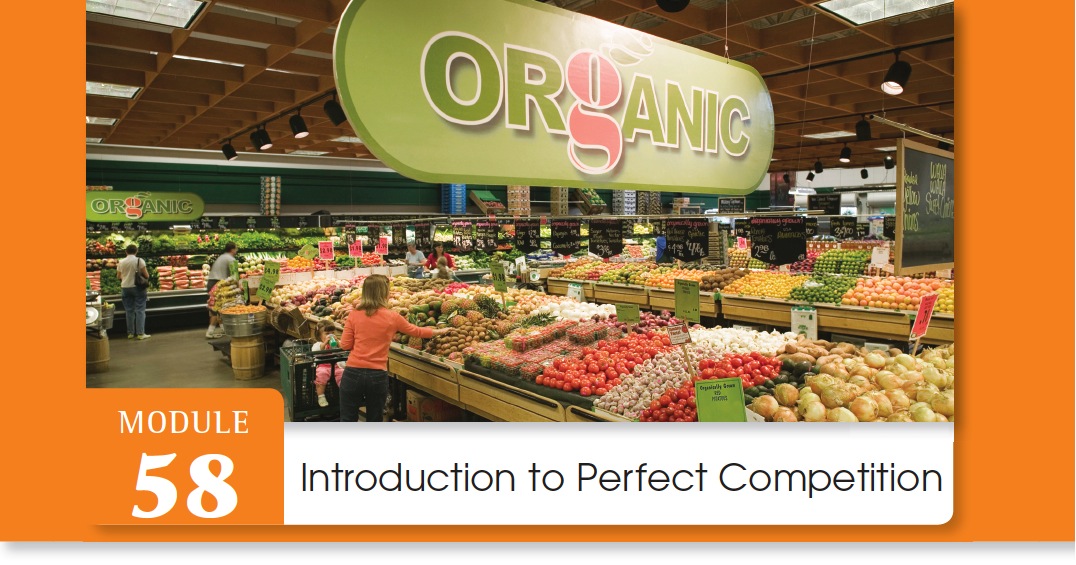Chapter Introduction
MODULE 58
Introduction to Perfect Competition

In this Module, you will learn to:
• Determine the profit-
• Assess whether or not a competitive firm is profitable
AP® Exam Tip
One of the most important concepts to learn in microeconomics is that firms maximize total profit by choosing the quantity of output that equates marginal revenue and marginal cost.
Recall the example of the market for organic tomatoes from our discussions in Section 10. Jennifer and Jason run an organic tomato farm, but many other organic tomato farmers, such as Yves and Zoe, sell their output to the same grocery store chains. Since organic tomatoes are a standardized product, consumers don’t care which farmer produces the organic tomatoes they buy. And because so many farmers sell organic tomatoes, no individual farmer has a large market share, which means that no individual farmer can have a measurable effect on market prices. These farmers are price-